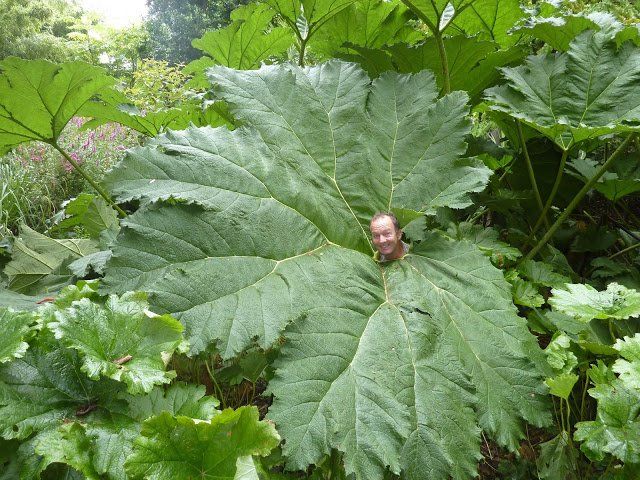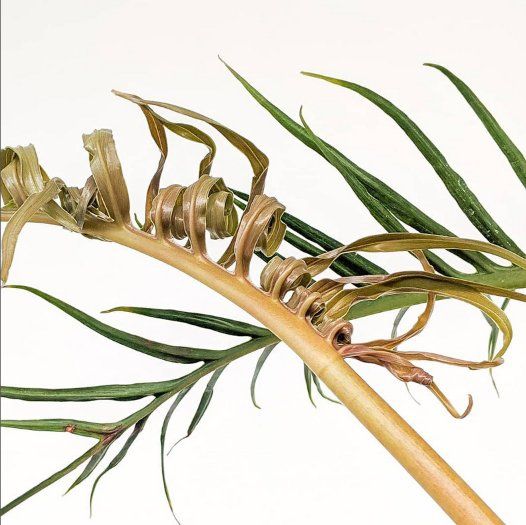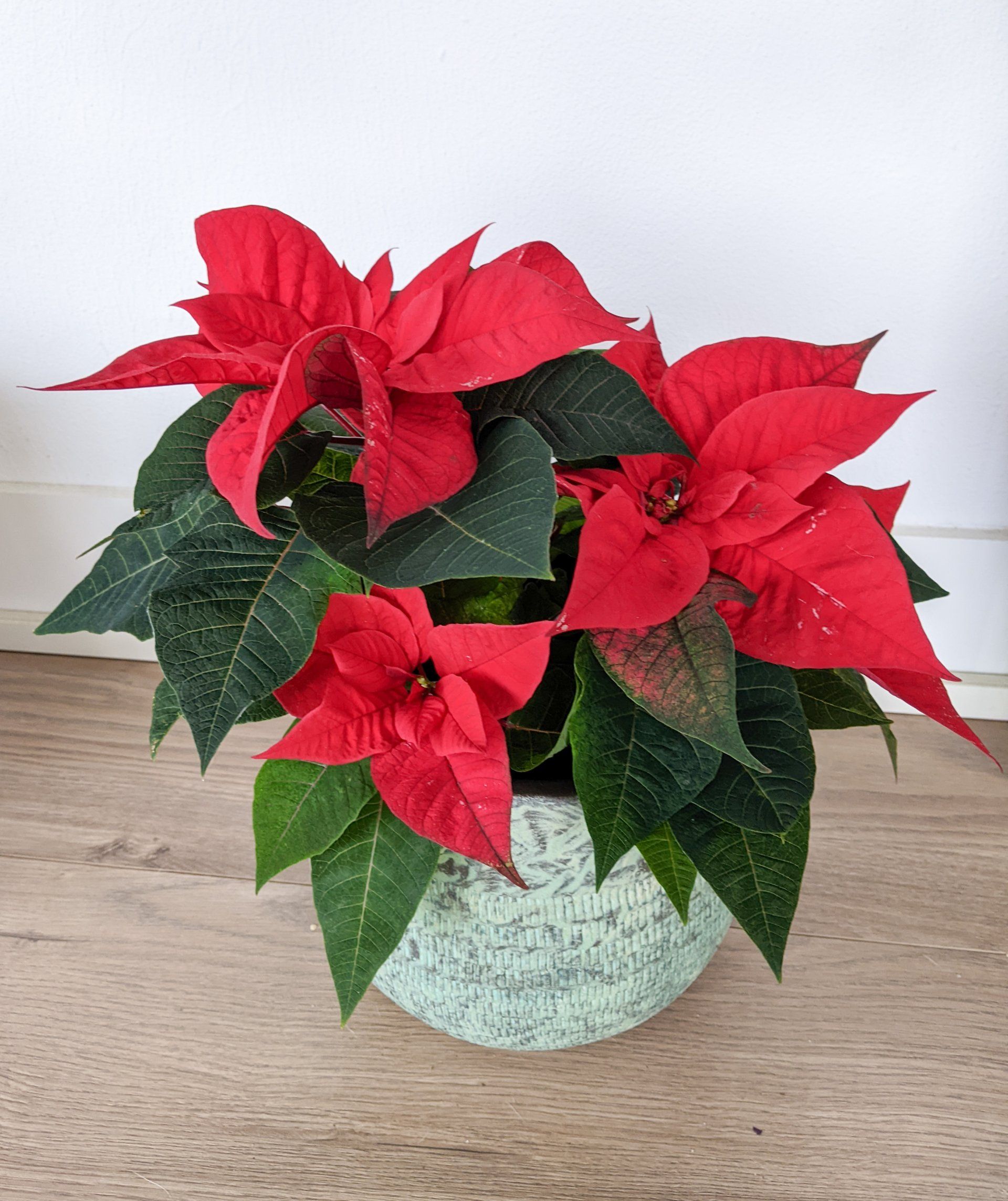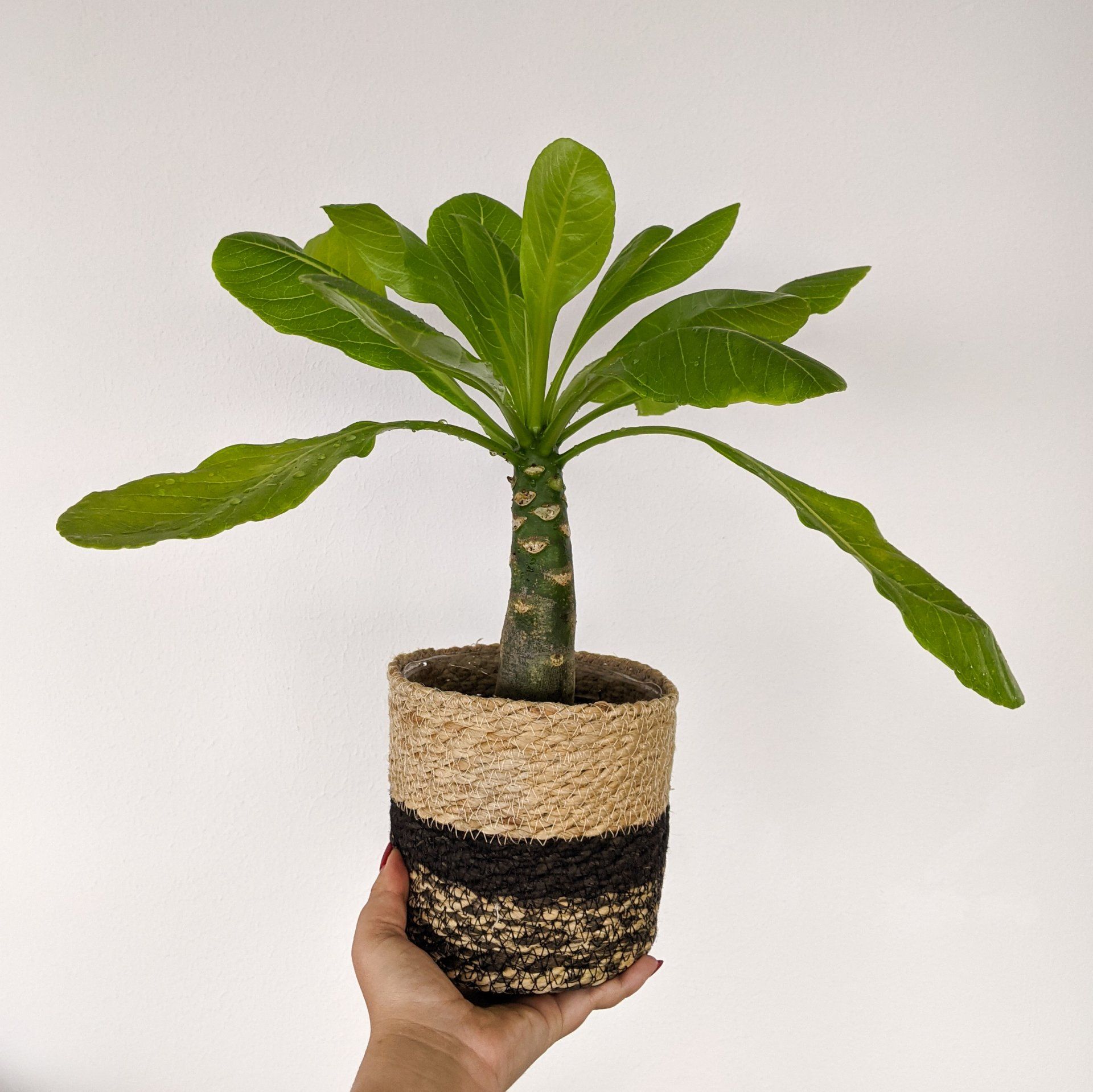You’d think it’s something from a cartoon, but no: these palm leaves operate as sails for canoes! And it doesn’t end there: no less than 36 uses of this palm are reported… From baskets and textiles to food and medicinal purposes. As you can see in this picture, leaves can get very big, sometimes even 8m (26ft)! The seeds of this palm can float in the water for a long time, until they end up somewhere where germination is possible.
555-555-5555
mijnmail@mailservice.com
555-555-5555
mijnmail@mailservice.com
Does size matter?
Mar 26, 2020
Is bigger always better? 5 huge leaves and why they’re so big.
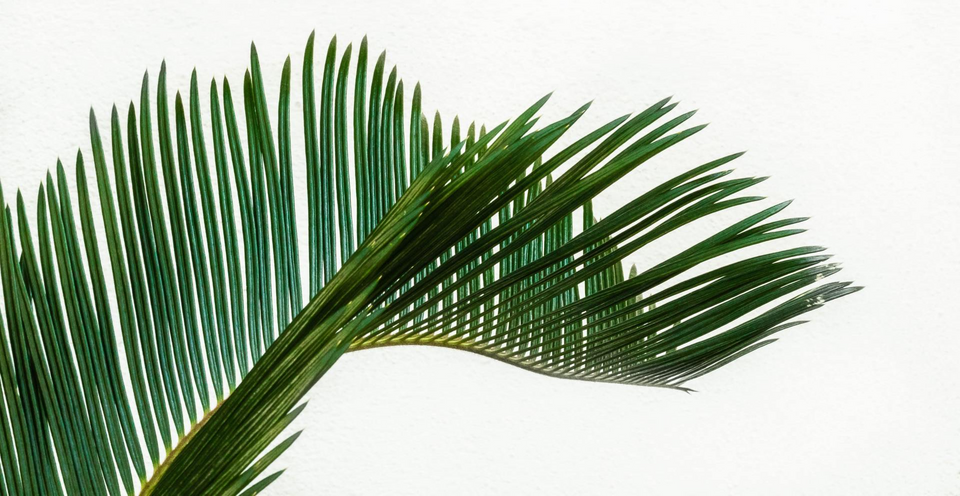
Does size matter?
A larger leaf means soaking up more sun, which means more growth! So is this the answer to the question? Nope, there’s much more going on than just the sunlight.
A bigger leaf loses more water than smaller ones. It’s just like sweating: in order to keep a decent temperature, a plant excretes water from the leaves. So being a big boy in a desert almost certainly leads to death: you can’t spare that much water over there!
But why are leaves in colder climates not bigger then? No risk of overheating over there, right? As it turns out, the risk of frost damage plays a large role as well. Tinier leaves are better able to extract warmth from their surroundings when it’s getting chilly.
The warm humid tropics though, that’s where you can get crazy with the leaf size! Enough water to sweat out the heat and no snow freezing you over. So no surprise that these 5 giants are all native to tropic areas:
A bigger leaf loses more water than smaller ones. It’s just like sweating: in order to keep a decent temperature, a plant excretes water from the leaves. So being a big boy in a desert almost certainly leads to death: you can’t spare that much water over there!
But why are leaves in colder climates not bigger then? No risk of overheating over there, right? As it turns out, the risk of frost damage plays a large role as well. Tinier leaves are better able to extract warmth from their surroundings when it’s getting chilly.
The warm humid tropics though, that’s where you can get crazy with the leaf size! Enough water to sweat out the heat and no snow freezing you over. So no surprise that these 5 giants are all native to tropic areas:
5. Dinosaur food (Gunnera manicata)
This one is for all you in the northern regions of Europe. It doesn’t get any bigger than this over here! Its original habitat is Brazil: it’s native to the mountain forests in the South-East. Leaves grow up to 2m (6,6 ft), sometimes even 3m (9,8ft)! The underside of the leaf and the petioles have spikes on them, so covering for rain under this one is a bit risky! Though the common name for G. manicata is giant rhubarb, it is not closely related to rhubarb.
Researchers found it contains medicinal qualities: phenolic compounds are effective against Candida albicans and Staphylococcus aureus, respectively a yeast and a bacterium in the human body that can both become a serious nuisance when overgrowing.
Researchers found it contains medicinal qualities: phenolic compounds are effective against Candida albicans and Staphylococcus aureus, respectively a yeast and a bacterium in the human body that can both become a serious nuisance when overgrowing.
4. Ethiopia’s tree against hunger (Ensete ventricosum)
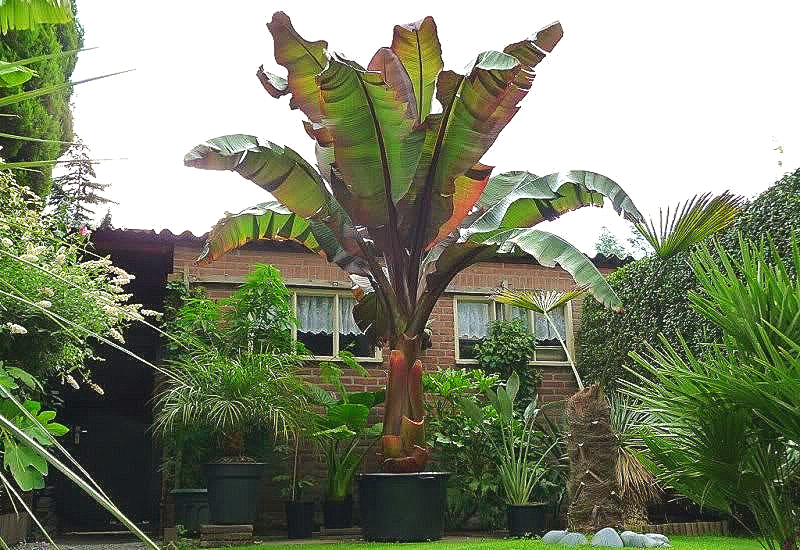
Ensete ventricosum
Ensete ventricosum
Photo credit: Richard from twooba.com
Knop
This member of the banana family is called the ‘tree against hunger’ because this multipurpose staple crop provides food for approximately 20 million Ethiopians. You’re thinking about bananas now, aren’t you? Nope, that’s not the edible part of this plant! It’s the pseudostem base and the underground bulb that provide the starch-rich food.
Leaves of this plant can grow up to 5m (16,4ft) tall! Other names for this plant are Ethiopian banana, false banana, Abyssinian banana or enset.
Leaves of this plant can grow up to 5m (16,4ft) tall! Other names for this plant are Ethiopian banana, false banana, Abyssinian banana or enset.
3. Sail away, sail way, sail away (Manicaria saccifera)
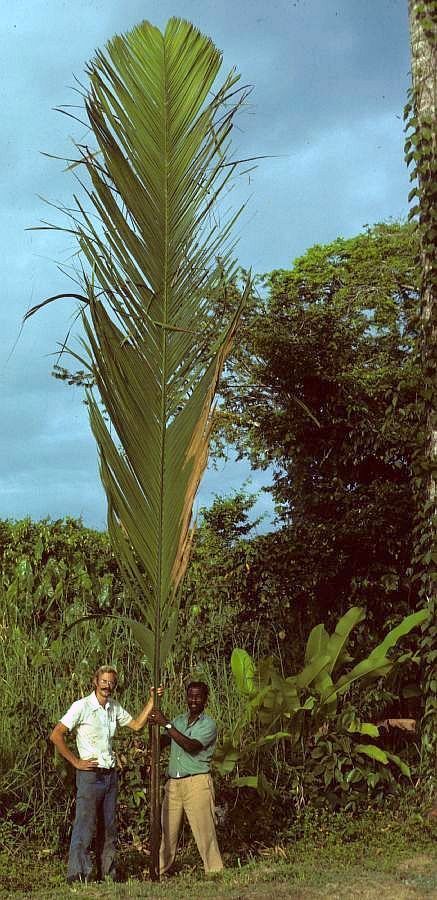
2. Tallest of them all (Raphia regalis)
Leaves more than 25m (82ft)
tall. How… I mean, how?? Can you imagine? It’s perfectly understandable these leaves are used to make furniture, amongst other things. Truth be told: the leaves are not entire, they’re made up of 180 separate leaflets along the main leaf stem. But still… horror movies could be made about these giant things, right??
Ironically, despite being a very important source for a large part of Africa, surprisingly little is known of this species, and thus very little photo's are available! I couldn't find any that shows the hugeness of the plant.
1. The queen of flowers (Victoria amazonica)
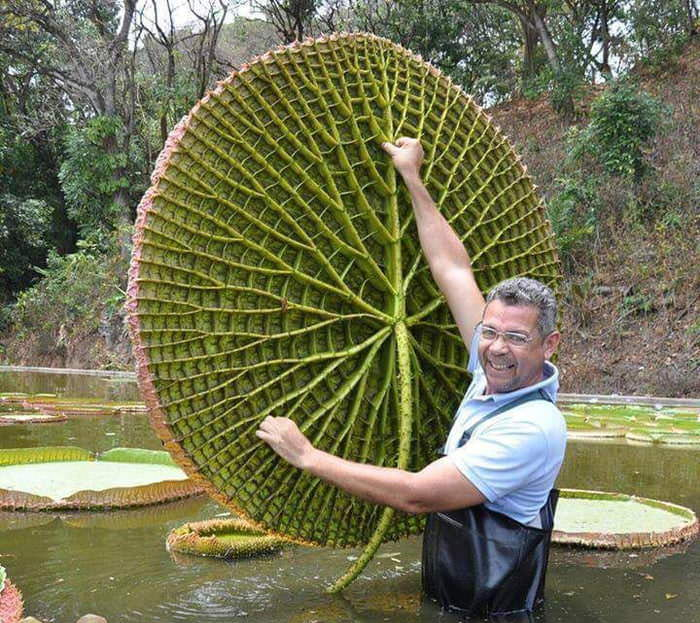
Titel dia
Backside of a leaf of the Victoria amazónica (Photo: Reddit, u/naturalheightgainer)
Knop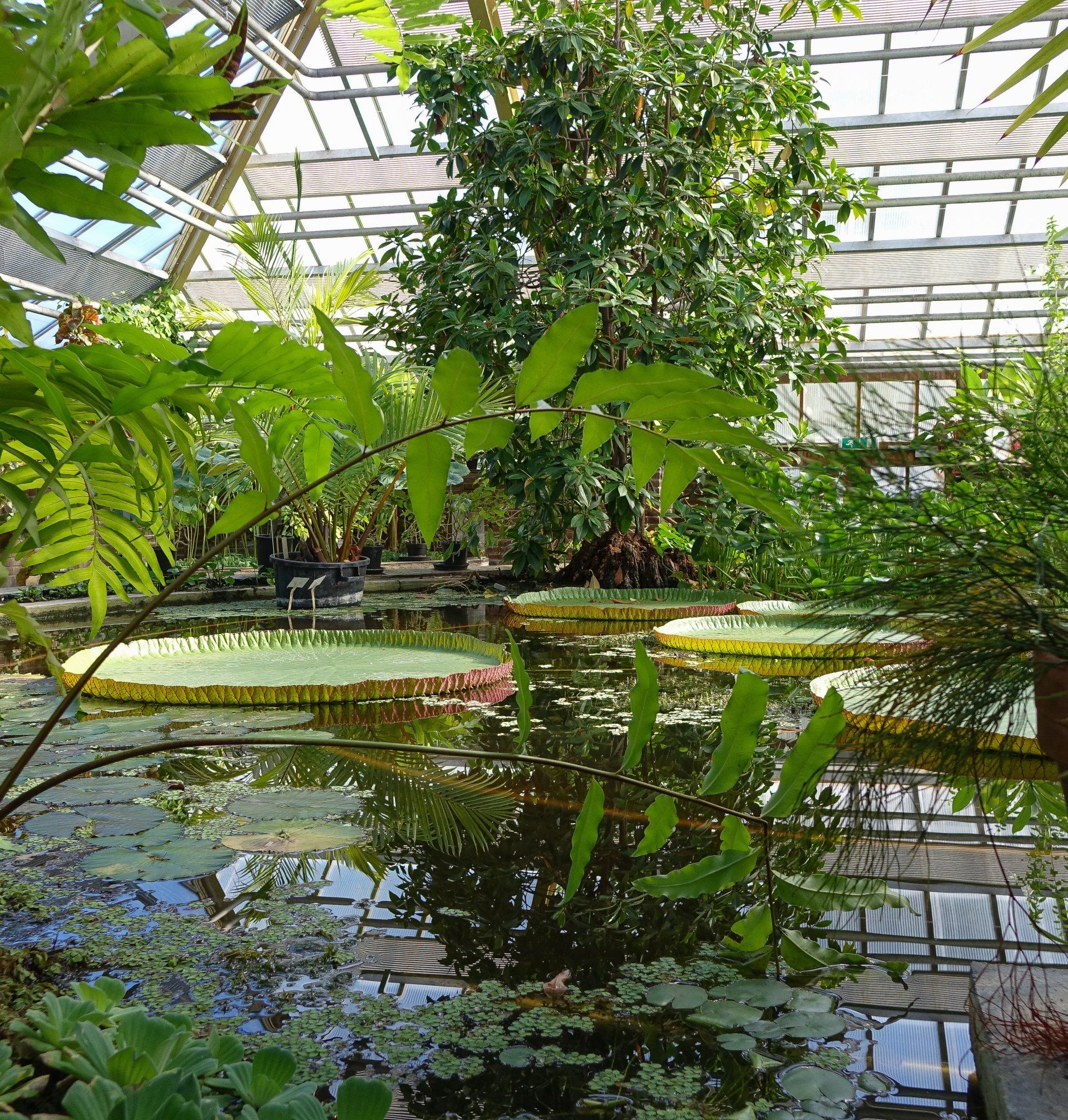
Titel dia
Victoria amazónica in the Botanical garden of Leiden
Knop
Formerly known as Victoria regina or regia, referring to queen Victoria. The lily pads grow 3m (10ft) in diameter
and can hold a small child easily! This plant produces the largest flowers in the world: up to 40cm (16inch) in diameter. They bloom only two nights. The first night, it smells like pineapple, the second night the scent is gone. Why? So the beetle that has to pollinate it, gets encouraged to go to another flower. Perfect example of how beautiful and smart nature is!
- Reference list
- Ian J. Wright et al. (Sep 2017) “Global climatic drivers of leaf size” Science, 357 (6354) p917-921 (accessed Dec 2019) https://dx.doi.org/10.1126/science.aal4760
- https://www.newscientist.com/article/2145966-we-may-finally-understand-why-tropical-plants-have-huge-leaves/ (accessed Dec 2019)
- Christiane Maria Colli et al. (Jan 2014). "Chemical constituents and pharmacological profile of Gunnera manicata L. extracts". Brazilian Journal of Pharmaceutical Sciences. 50 (1) p147-154 (accessed Dec 2019) http://www.dx.doi.org/10.1590/S1984-82502011000100015
- Brandt SA et al. 1997. “The “Tree Against Hunger”: enset-based agricultural system in Ethiopia”. Washington, DC: American Association for the Advancement of Science.
- James S. Borell et.al. (Jan 2019). "Enset in Ethiopia: a poorly characterized but resilient starch staple". Annals of Botany. 123 (5) p747–766 (accessed Dec 2019) https://dx.doi.org/10.1093/aob/mcy214
- https://www.kew.org/read-and-watch/tree-against-hunger (accessed Dec 2019)
- Juan Carlos Copete et al. (June 2018) “Pollination Ecology of the Manicaria saccifera (ARECACEAE): A Rare Case of Pollinator Exclusion” Chapter from the edited volume “Pollination in Plants”. (accessed Dec 2019)https://dx.doi.org/10.5772/intechopen.76073
- http://www.palmpedia.net/wiki/Manicaria_saccifera (accessed Dec 2019)
- Cosiaux, A., Gardiner, L.M. & Couvreur, T.L.P. 2018. Raphia regalis . The IUCN Red List of Threatened Species 2018: e.T46200A95309512. (accessed Dec 2019) http://dx.doi.org/10.2305/IUCN.UK.2018-2.RLTS.T46200A95309512.en
- https://owlcation.com/stem/Which-Plant-Has-The-Largest-Leaf-In-The-World (accessed Dec 2019)
- https://www.hortusleiden.nl/de-hortus/kassen/victoriakas/victoria-amazonica (accessed Dec 2019)
Did you like this article? Head over to Wonderful weird plants
for more!
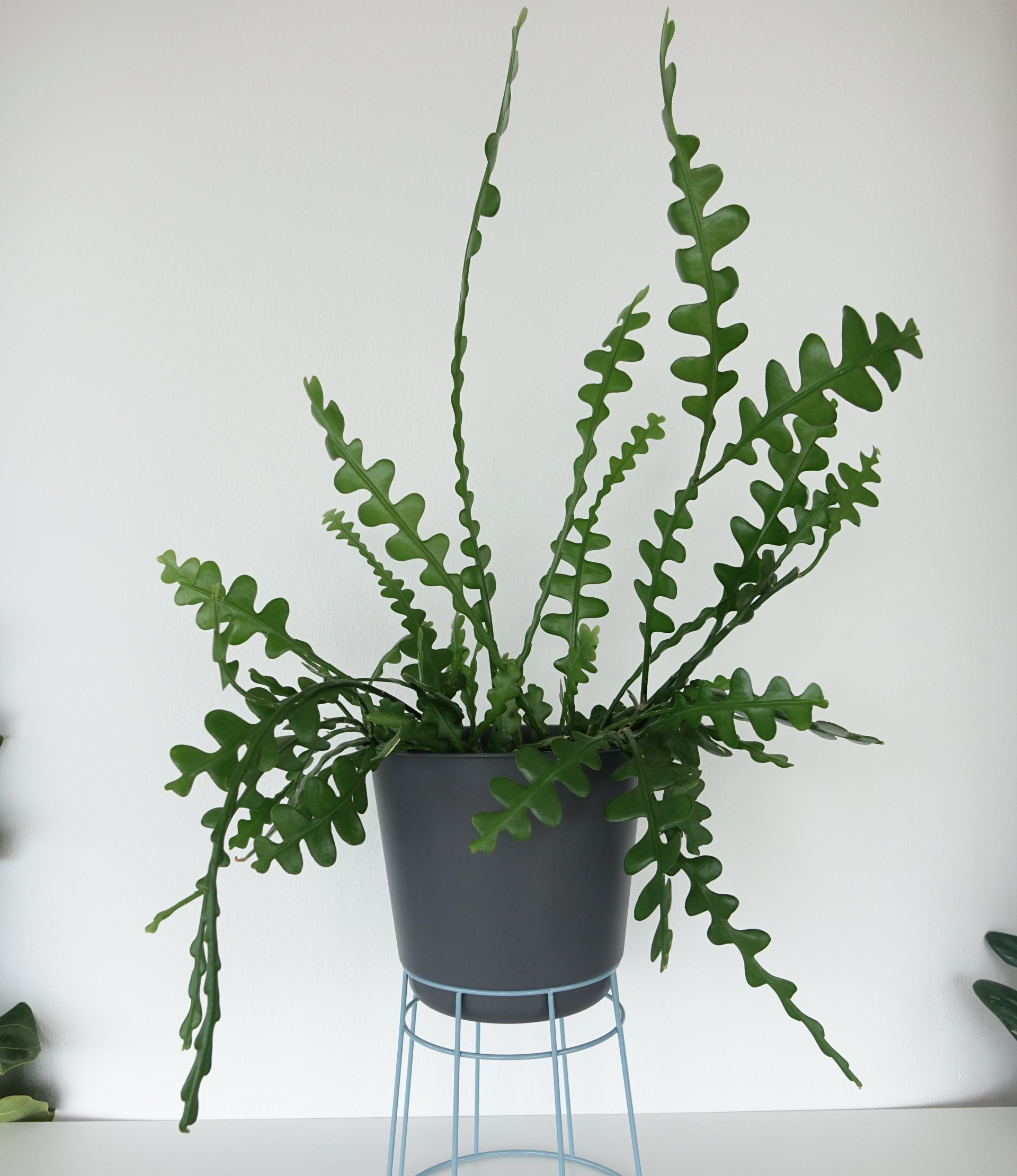
By Marieke
•
01 Aug, 2022
What does it mean if you receive a cactus as a gift? It's probably your birthday or a houswarming gift. After all, a stylish cactus is a hip accessory in a modern living room. However, it was not a suitable gift in the past: it was said that if you gifted someone a cactus, you would secretly experience the recipient as 'prickly' and unpleasant. Or maybe you underestimate the recipient's green thumb? Since a cactus just stand there, on your windowsill, whatever you do or don't do for it. But is that really the case? Let's take a closer look at these spiky statues.
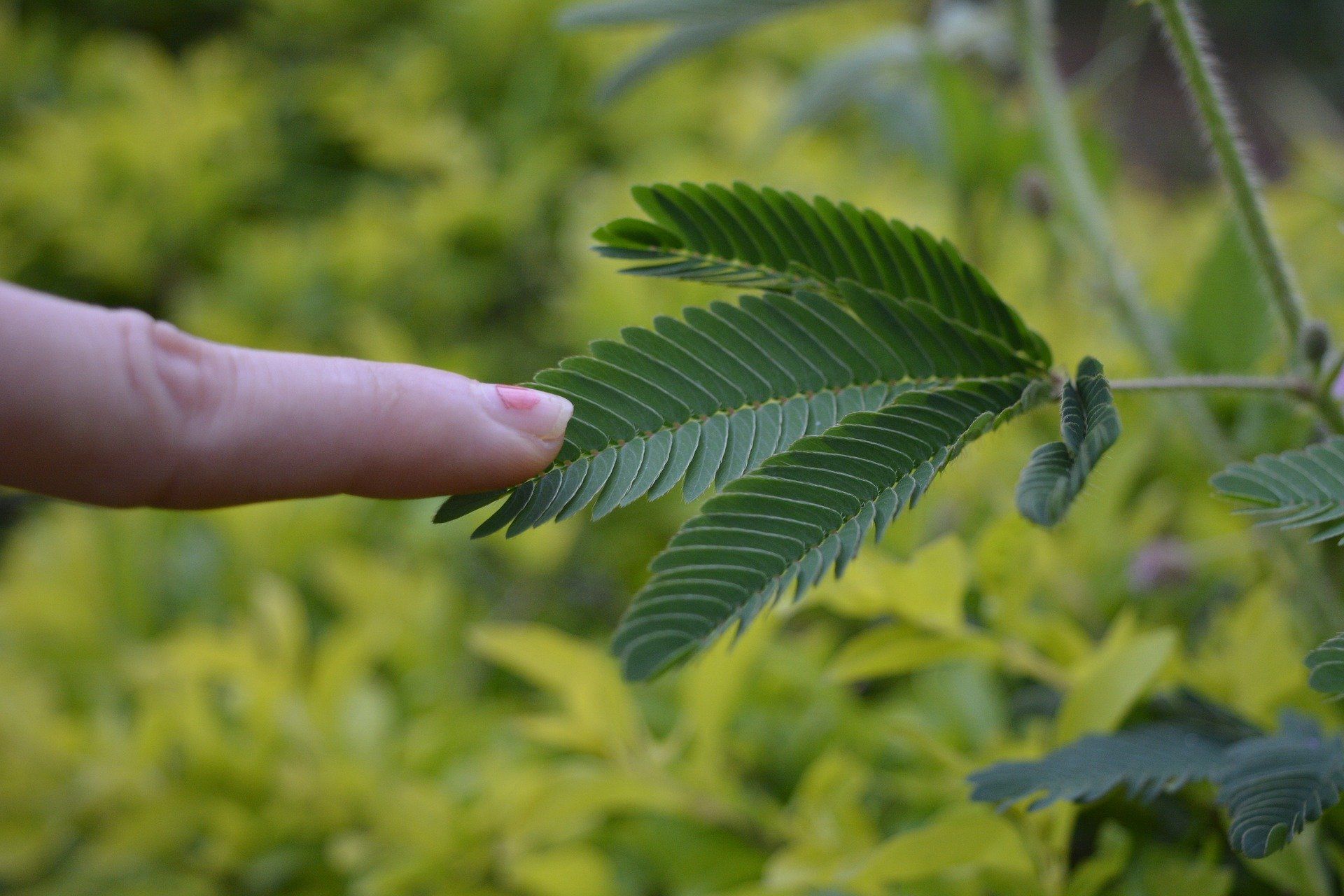
By Marieke
•
15 Mar, 2022
In the 17th century, something remarkable happens: botanist Rumphius places a plant between the animal kingdom and the plant kingdom. Why? Because it moved when touched. At the time, such sensitivity was only ascribed to organisms in the animal kingdom. But this was a plant!

By Marieke
•
19 Dec, 2021
Confession: until recently, no orchid was allowed in my house anymore… Years ago I had 2 Butterfly orchids and planned to take better care of them, hoping to get more flowers. I did everything to make them feel good! Until one day in the summer I didn't pay attention and the poor plants burned to death on my south-facing roof terrace… Together with my good intentions I threw the plants away. No more orchids for me!
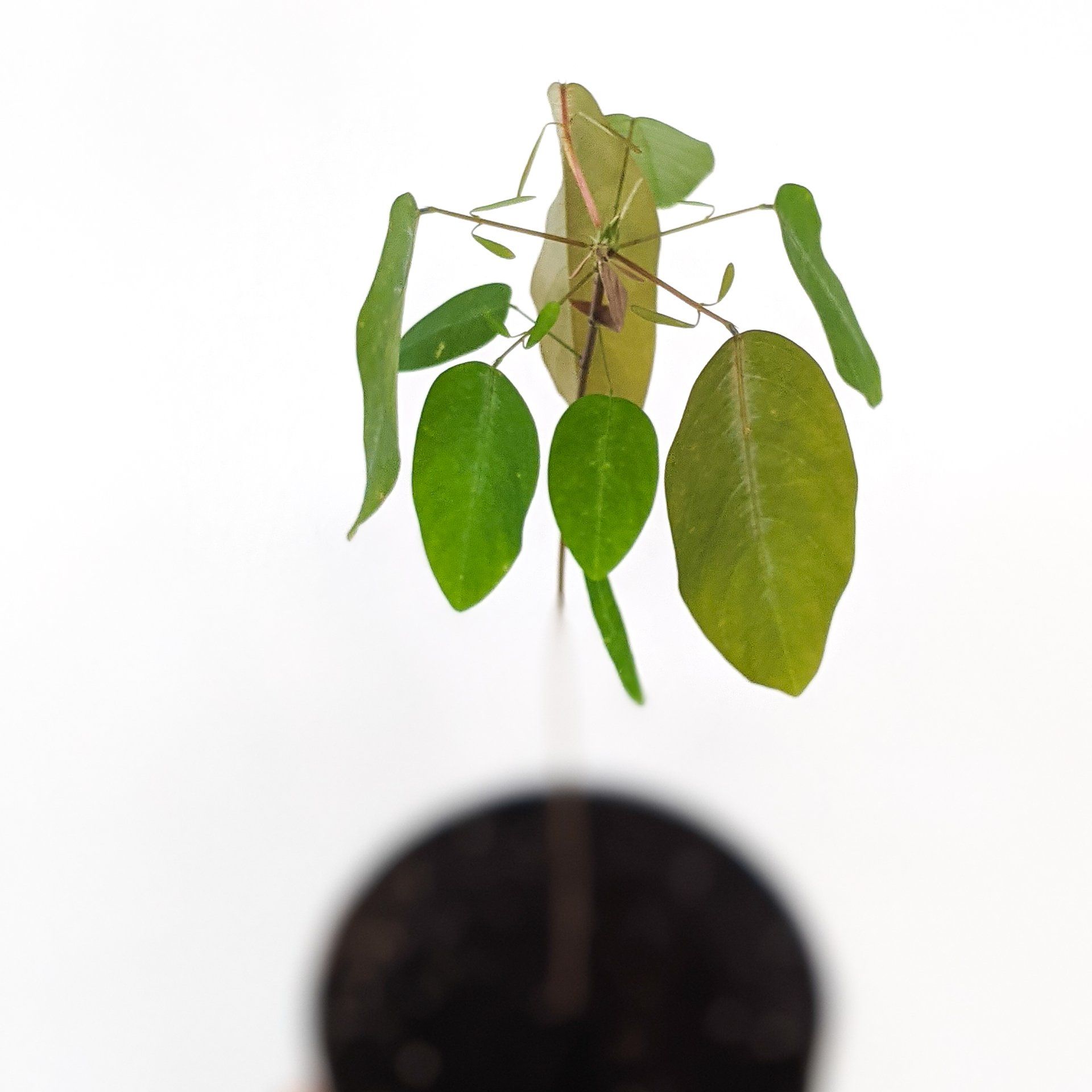
By Marieke
•
06 Nov, 2021
I wrote about a fast-moving plant before, in my article on carnivorous plants : the Venus Flytrap. The dancing plant is also a fast-moving plant, albeit not as fast as the flytrap. Yet it can be seen with the naked eye! I sowed some of these plants and made some timelapses, see the video below.

By Marieke
•
06 Nov, 2021
A succulent plant with partly transparent leaves! I got it from Rogier after our first meeting, about two years ago. This little Haworthia cooperi was a 'pup', a little one that had started growing on the mother plant. This mother plant was collected by an acquaintance of Rogier (with permission) in the Bolo Nature Reserve in South Africa. My love for weirdos in the plant world immediately bubbled up. And there is much more to discover about succulents!



